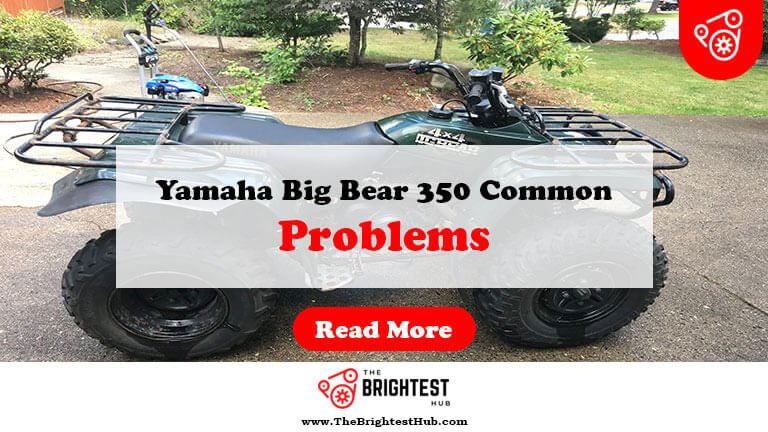John Deere 4100 Problems: Quick Fixes & Tips
The John Deere 4100 faces common issues like hydraulic problems and electrical failures. Owners often report poor starting and overheating.
The John Deere 4100 is a versatile compact utility tractor, popular for its reliability and performance. However, like any machine, it can experience problems over time. Many users have encountered hydraulic system failures, which can impede functionality and productivity. Electrical issues, such as faulty wiring or battery problems, also plague some models.
Additionally, users often report difficulties with starting and overheating, especially in older units. Understanding these common problems can help owners take preventive measures and maintain their tractors effectively. Regular maintenance and timely repairs can prolong the life of the John Deere 4100 and ensure it operates smoothly.
Introduction To John Deere 4100

The John Deere 4100 is a versatile compact utility tractor. It serves many purposes for homeowners and small farm owners. Known for its durability, it combines power with agility. Many users appreciate its compact design and ease of use. However, like any machinery, it has some common problems. Understanding these issues helps maintain its performance.
Compact Utility Tractor Essentials
The John Deere 4100 is designed for efficiency. Here are some key features:
- Engine: 20 HP, 3-cylinder diesel engine
- Transmission: Hydrostatic transmission for smooth operation
- Size: Compact design for easy maneuverability
- Attachments: Compatible with various implements like loaders and mowers
These essentials make the 4100 ideal for various tasks. Users can perform landscaping, gardening, and light construction with ease.
Common Usage Scenarios
The John Deere 4100 excels in different scenarios. Here are some common uses:
- Landscaping: Efficiently manage lawns and gardens.
- Farming: Ideal for small-scale farming tasks.
- Snow Removal: Attachments available for winter conditions.
- Construction: Useful for light construction and digging.
Each scenario showcases the tractor’s versatility. Users benefit from its compact size and powerful engine.
Starting Troubles
The John Deere 4100 is a reliable machine, but starting troubles can happen. Issues with starting can be frustrating. Understanding the common reasons helps fix the problem quickly.
Battery Maintenance Tips
Battery issues are common with the John Deere 4100. Follow these simple tips to keep your battery in good shape:
- Regular Inspection: Check battery terminals for corrosion.
- Clean Connections: Use a wire brush to clean terminals.
- Check Voltage: Use a multimeter to measure voltage.
- Charge Regularly: Keep the battery fully charged.
- Replace Old Batteries: Change batteries older than three years.
Ignition System Quick Fixes
Problems with the ignition system can cause starting issues. Try these quick fixes:
- Inspect the Key Switch: Ensure it is functioning properly.
- Check Fuses: Replace blown fuses in the ignition circuit.
- Examine the Starter Motor: Listen for clicking sounds.
- Test the Ignition Coil: Replace it if it’s faulty.
Use this table to summarize common ignition issues:
| Issue | Symptoms | Solution |
|---|---|---|
| Dead Battery | No cranking sound | Charge or replace battery |
| Faulty Key Switch | No power | Replace key switch |
| Blown Fuse | Lights out | Replace blown fuse |
| Bad Starter Motor | Clicking noise | Repair or replace starter motor |
These tips can help you troubleshoot starting issues effectively. Keep your John Deere 4100 running smoothly.
Hydraulic Issues
Hydraulic problems can affect the performance of the John Deere 4100. These issues often lead to decreased efficiency and can cause significant downtime. Understanding how to identify and fix these problems is vital for keeping your equipment running smoothly.
Recognizing Hydraulic Failures
Hydraulic failures can show up in various ways. Here are some signs to watch for:
- Slow or unresponsive hydraulics: The equipment may not lift or move as expected.
- Fluid leaks: Look for puddles or wet spots around hydraulic components.
- Unusual noises: Grinding or whining sounds may indicate a problem.
- Warning lights: Dashboard alerts can signal hydraulic issues.
Fluid And Filter Changes
Regular fluid and filter changes help prevent hydraulic issues. Follow these steps for effective maintenance:
- Check the hydraulic fluid level: Ensure it meets the recommended level.
- Change the hydraulic fluid: Replace it according to the manufacturer’s guidelines.
- Replace the hydraulic filter: A clogged filter can restrict flow.
- Inspect hoses and fittings: Look for wear, cracks, or leaks.
Use high-quality hydraulic fluid for best results. This can prolong the life of your equipment and improve performance.
Transmission Complications
The John Deere 4100 is a reliable tractor. Yet, some users face transmission complications. These issues can hinder performance and efficiency. Understanding the common problems helps in effective troubleshooting.
Shift Linkage Adjustments
One common issue involves the shift linkage. Misalignment can cause shifting problems. Here’s how to check and adjust:
- Locate the shift linkage on the tractor.
- Inspect for any visible wear or damage.
- Check for loose connections. Tighten if necessary.
- Adjust the linkage according to the manufacturer’s guidelines.
Proper adjustments ensure smooth gear changes. Regular maintenance prevents future issues.
Troubleshooting Transmission Noises
Unusual noises may indicate transmission issues. Identifying the sound type can help diagnose the problem. Here are common noises and their meanings:
| Noises | Possible Causes |
|---|---|
| Grinding | Worn gears or low fluid levels |
| Clunking | Loose or damaged shift linkage |
| Whining | Low fluid or failing pump |
If you hear any of these noises, take action. Check the fluid levels first. If levels are fine, inspect the components for damage.
Addressing transmission noises early can save time and money. Regular checks enhance the lifespan of your John Deere 4100.
Engine Performance
The John Deere 4100 is a popular compact tractor. It offers great power and efficiency. However, engine performance issues can arise. Understanding these issues helps maintain your tractor’s functionality.
Routine Engine Care
Regular engine care is vital for optimal performance. Here are some essential maintenance tips:
- Oil Changes: Change the oil every 50 hours of operation.
- Filter Checks: Inspect and replace air and fuel filters regularly.
- Coolant Levels: Check and maintain proper coolant levels.
- Fuel Quality: Use clean, high-quality fuel.
Following these steps ensures your engine runs smoothly. Neglecting routine care can lead to serious problems.
Solving Overheating Problems
Overheating can severely damage your engine. Here are common causes and solutions:
| Cause | Solution |
|---|---|
| Low Coolant Levels | Refill coolant to the recommended level. |
| Clogged Radiator | Clean or replace the radiator as needed. |
| Faulty Thermostat | Replace the thermostat to restore proper function. |
| Worn Water Pump | Inspect and replace the water pump if necessary. |
Monitor your engine temperature regularly. Taking action early can prevent major repairs.
Electrical System Glitches
The John Deere 4100 is a reliable machine. Yet, it can face electrical system glitches. These issues can disrupt performance. Understanding common problems helps in quick fixes.
Fuses And Wiring Inspections
Fuses protect the electrical system. A blown fuse can stop your tractor. Regular inspections are essential to ensure everything works.
- Check all fuses regularly.
- Replace any blown fuses immediately.
- Inspect wiring for damage or corrosion.
Here’s a simple checklist:
| Component | Status | Action |
|---|---|---|
| Fuses | Check | Replace if blown |
| Wiring | Inspect | Repair or replace damaged sections |
Alternator And Starter Checks
The alternator charges the battery. A faulty alternator can drain the battery. Check the starter for smooth operation.
- Test the alternator output regularly.
- Inspect starter connections for tightness.
- Listen for unusual noises during start-up.
Follow these steps for a basic check:
- Turn off the engine.
- Inspect battery connections.
- Check alternator belts for wear.
- Test the starter with a multimeter.
These simple checks can prevent major issues. Regular maintenance keeps your John Deere 4100 running smoothly.
Pto And Implement Attachments
The John Deere 4100 is a versatile machine, ideal for various tasks. Yet, it can face challenges with its Power Take-Off (PTO) and implement attachments. Understanding these issues can save time and money.
Pto Engagement Issues
PTO engagement problems are common with the John Deere 4100. These issues can hinder performance and productivity. Here are some typical symptoms:
- PTO does not engage.
- PTO engages but makes unusual noises.
- PTO disengages unexpectedly.
Common causes include:
- Worn PTO clutch.
- Faulty electrical connections.
- Hydraulic fluid issues.
To troubleshoot, check:
- Fluid levels.
- Electrical connections.
- PTO switch functionality.
Attachment Compatibility And Fixes
Using the right attachments is crucial for the John Deere 4100. Incompatibility can lead to inefficiencies and damage. Here’s what you need to know:
| Attachment Type | Compatibility Status |
|---|---|
| Front Loader | Compatible |
| Backhoe | Compatible with modifications |
| Tiller | Compatible |
| Snow Blower | Not compatible |
To fix attachment issues:
- Ensure proper mounting.
- Check hydraulic connections.
- Refer to the owner’s manual.
Always consult with a professional if unsure. Proper maintenance can prevent many problems.
Steering And Suspension
The steering and suspension systems in the John Deere 4100 are crucial for safe operation. Issues in these systems can lead to poor handling and discomfort. Regular maintenance is vital for optimal performance.
Steering System Maintenance
Maintaining the steering system ensures smooth operation. Here are key aspects to consider:
- Fluid Levels: Regularly check hydraulic fluid levels.
- Inspect Hoses: Look for cracks or leaks in hydraulic hoses.
- Lubrication: Lubricate moving parts to avoid wear.
- Tighten Bolts: Ensure all bolts are properly tightened.
Ignoring these steps can lead to serious problems. Steering difficulties may arise due to worn components.
Addressing Suspension Squeaks And Stiffness
Squeaks and stiffness in the suspension can affect ride quality. Here’s how to address these issues:
- Inspect Bushings: Check for wear and replace if needed.
- Check Shocks: Look for leaks or damage in shock absorbers.
- Lubricate Joints: Apply lubricant to all pivot points.
- Examine Springs: Inspect for cracks or sagging.
Regular inspections can prevent bigger issues down the line. Addressing squeaks early keeps the ride smooth.
Seasonal Maintenance Tips
Proper maintenance of your John Deere 4100 ensures it runs smoothly throughout the year. Seasonal changes can affect performance. Follow these tips to keep your tractor in top shape.
Preparing For Winter
Winter can be harsh on machinery. Here are essential steps for winter preparation:
- Clean the Tractor: Remove dirt and debris.
- Inspect Fluids: Check engine oil and coolant levels.
- Battery Care: Ensure the battery is fully charged.
- Tires: Check tire pressure and tread depth.
- Fuel System: Add a fuel stabilizer to prevent gelling.
| Task | Frequency |
|---|---|
| Fluid Check | Every month |
| Tire Inspection | Before winter |
| Battery Check | Monthly |
Performing these tasks helps avoid winter-related problems. It also extends the life of your John Deere 4100.
Summer Usage Considerations
Summer brings its own challenges. Keep these tips in mind for effective summer operation:
- Cooling System: Regularly check the coolant level.
- Air Filter: Clean or replace the air filter monthly.
- Grease Points: Lubricate all moving parts weekly.
- Fuel Quality: Use fresh fuel to avoid clogs.
- Inspect Belts: Check for wear and tear regularly.
Maintaining your John Deere 4100 during summer ensures optimal performance. Follow these guidelines for a trouble-free experience.
Troubleshooting Dashboard Indicators
The dashboard of your John Deere 4100 provides vital information. Understanding these indicators helps ensure your tractor runs smoothly. Each warning light signals an issue that needs attention. Ignoring these signals can lead to bigger problems. Let’s decode the warning lights and know when to seek help.
Decoding Warning Lights
Warning lights on the dashboard can be confusing. Here’s a simple guide to common indicators:
| Warning Light | Description | Action Required |
|---|---|---|
| Oil Pressure | Low oil pressure detected. | Check oil level immediately. |
| Battery | Battery charging issue. | Inspect battery connections. |
| Coolant Temperature | Engine running too hot. | Allow engine to cool. |
| Fuel Level | Low fuel level. | Refuel as soon as possible. |
Recognizing these lights can prevent serious damage. Always address the warning light as soon as it appears.
When To Seek Professional Help
Some issues require expert attention. Here are signs you need professional help:
- Multiple warning lights are on at once.
- Unusual noises come from the engine.
- The tractor won’t start despite troubleshooting.
- Fluid leaks appear under the tractor.
Ignoring these signs can worsen the problem. Contact a certified John Deere mechanic for assistance. They have the tools and expertise to diagnose complex issues.
User Experiences And Solutions
Many users of the John Deere 4100 have shared their experiences. These stories highlight common problems and solutions. Let’s explore what they say and the advice from experts.
Forum Highlights
Online forums are filled with insights from John Deere 4100 owners. Here are some common issues users face:
- Hydraulic Problems: Slow response or leaks.
- Electrical Issues: Battery draining or faulty wiring.
- Engine Trouble: Hard starting or stalling.
Users share their fixes:
- Check hydraulic fluid levels regularly.
- Inspect battery connections for corrosion.
- Clean fuel filters to improve engine performance.
Expert Advice Compilation
Experts recommend these steps for common John Deere 4100 issues:
| Problem | Solution |
|---|---|
| Hydraulic Leaks | Replace worn seals and hoses. |
| Electrical Failures | Use a multimeter to check connections. |
| Starting Issues | Change spark plugs and clean carburetor. |
Many users found success by following these expert tips. Regular maintenance is key. Keeping your John Deere 4100 in good shape helps avoid major repairs.
Accessories And Upgrades
Upgrading your John Deere 4100 can boost its performance. Accessories enhance functionality. They make tasks easier and quicker. Let’s explore some must-have add-ons.
Enhancing Your Tractor’s Capabilities
Accessories can transform your John Deere 4100. They improve efficiency and productivity. Here are a few options:
- Front Loader: Great for lifting and moving materials.
- Backhoe Attachment: Perfect for digging and excavation tasks.
- Snow Blower: Ideal for clearing snow in winter.
- Mower Deck: Provides a clean cut for your lawn.
Must-have Add-ons For Efficiency
These accessories help you work smarter. They save time and effort. Consider the following add-ons:
| Add-on | Benefit |
|---|---|
| Ballast Box | Improves stability and traction. |
| Hydraulic Kit | Enhances lifting power for attachments. |
| Rim Guard | Protects against tire damage and improves grip. |
| Canopy | Provides shade and protection from weather. |
These upgrades ensure your John Deere 4100 performs at its best. Choose the right accessories to meet your needs.
Final Thoughts
Understanding the common issues with the John Deere 4100 is key to effective ownership. Many users face challenges, but proactive steps can help. Regular upkeep will extend the life of your equipment. Being informed keeps you one step ahead.
Preventative Measures
Preventative measures can save time and money. Here are some effective strategies:
- Regular Inspections: Check for leaks and wear.
- Proper Storage: Keep the tractor in a dry place.
- Usage Guidelines: Follow the manufacturer’s recommendations.
- Quality Fuel: Use high-quality fuel to avoid clogs.
The Value Of Regular Maintenance
Regular maintenance is crucial for the John Deere 4100. It prevents major issues and boosts performance. Here’s why it matters:
| Maintenance Task | Frequency | Benefits |
|---|---|---|
| Oil Change | Every 100 hours | Enhances engine lifespan |
| Filter Replacement | Every 200 hours | Improves efficiency |
| Tire Check | Monthly | Ensures safety and stability |
| Battery Check | Every 6 months | Prevents unexpected failures |
By following a maintenance schedule, you can avoid costly repairs. A well-maintained tractor is more reliable and efficient.
Frequently Asked Questions
What Are Common Issues With John Deere 4100?
Common issues include hydraulic problems, electrical failures, and engine overheating.
How To Fix John Deere 4100 Hydraulic Issues?
Check for leaks, inspect fluid levels, and replace worn hoses to resolve hydraulic problems.
What Should I Check For Engine Overheating?
Inspect coolant levels, radiator condition, and ensure the thermostat is functioning properly.
How To Troubleshoot Electrical Problems?
Examine fuses, wiring connections, and battery health for effective electrical troubleshooting.
What Maintenance Prevents John Deere 4100 Problems?
Regular oil changes, filter replacements, and routine inspections help prevent common issues. “`
Conclusion
Experiencing issues with your John Deere 4100 can be frustrating. Regular maintenance and timely repairs can help minimize problems. Understanding common issues allows for better troubleshooting. Stay informed and proactive to keep your tractor running smoothly. With the right knowledge, you can enjoy the reliability that John Deere is known for.






